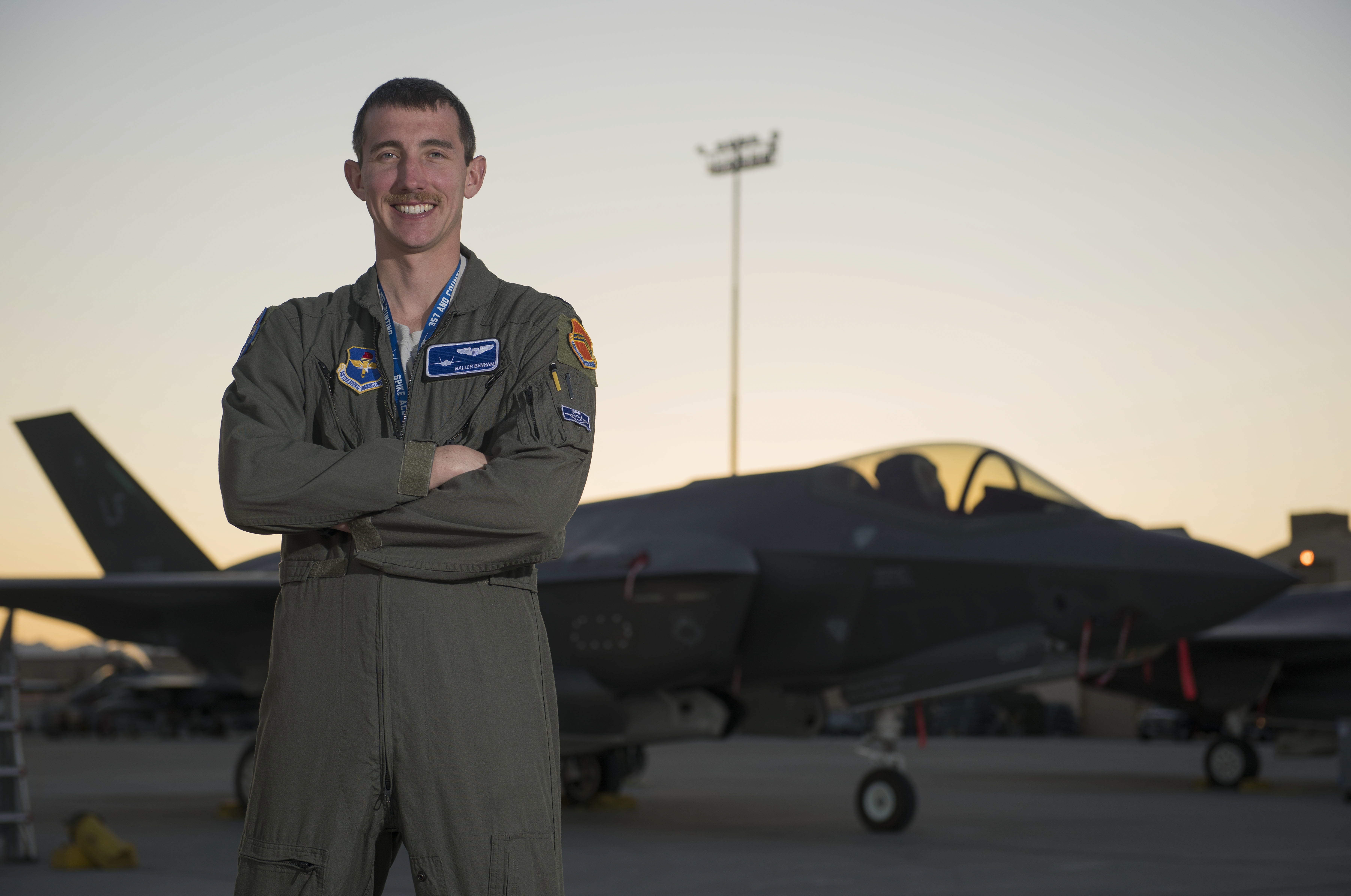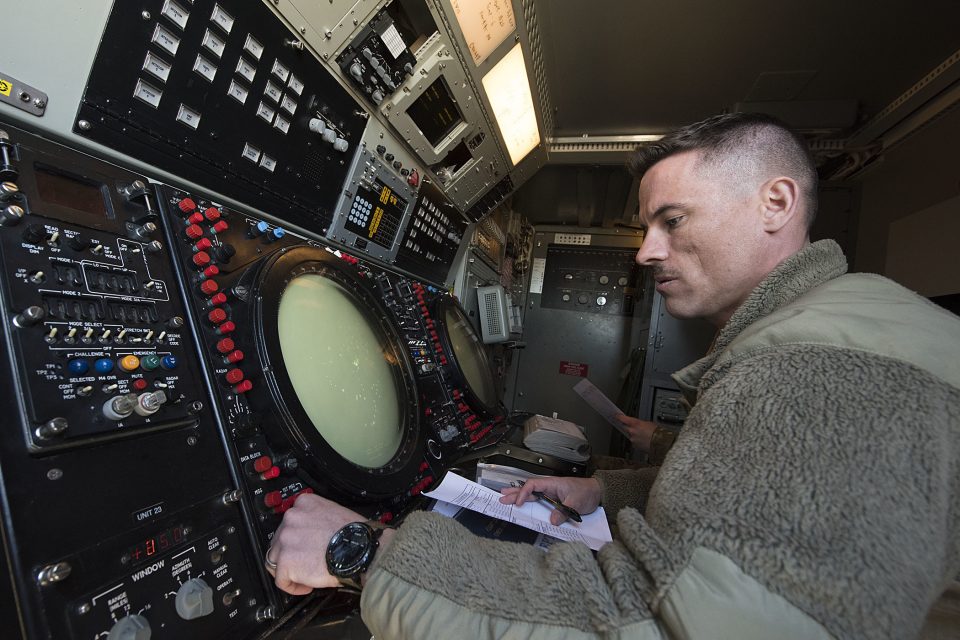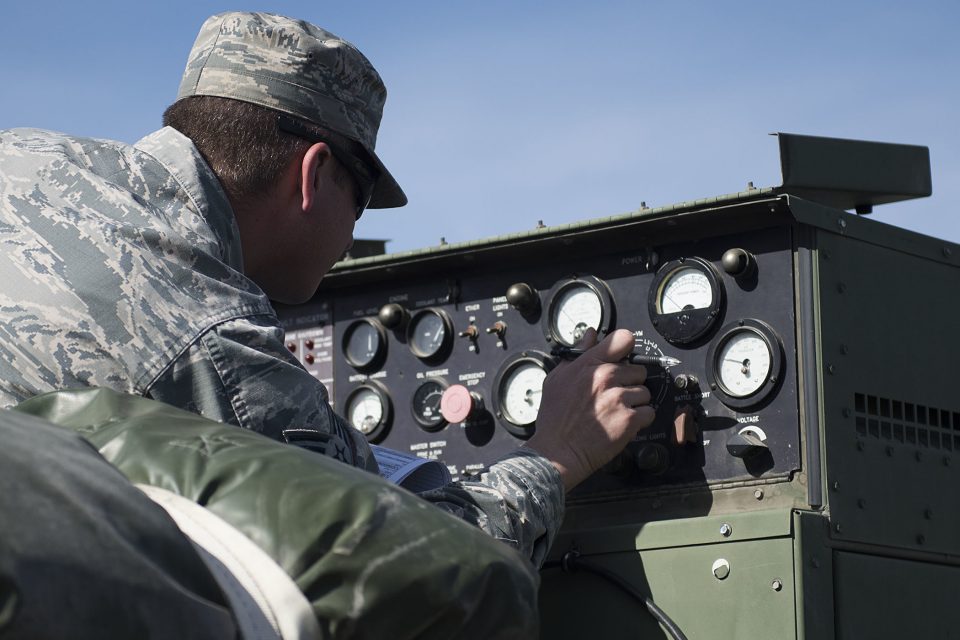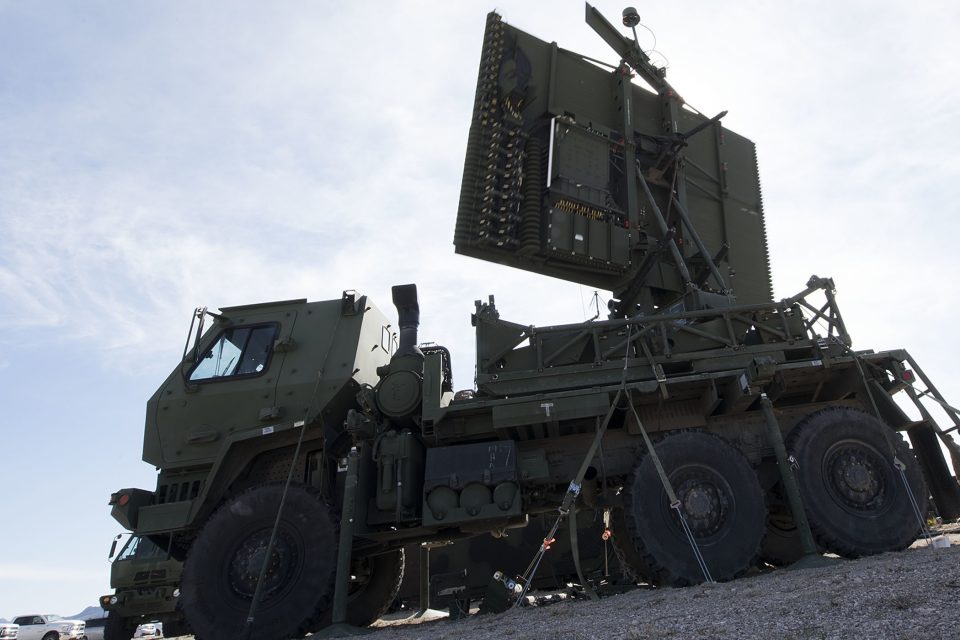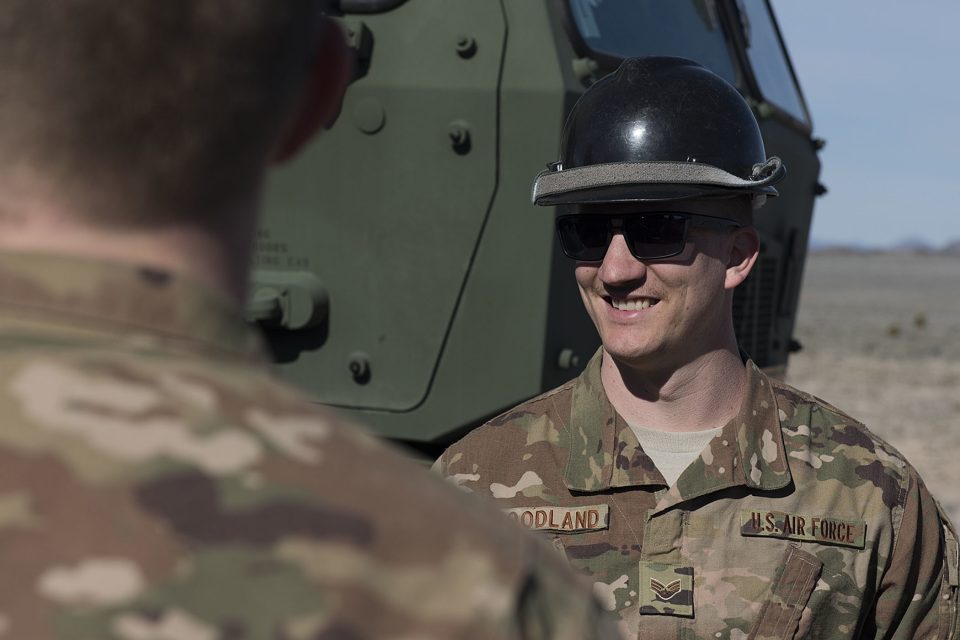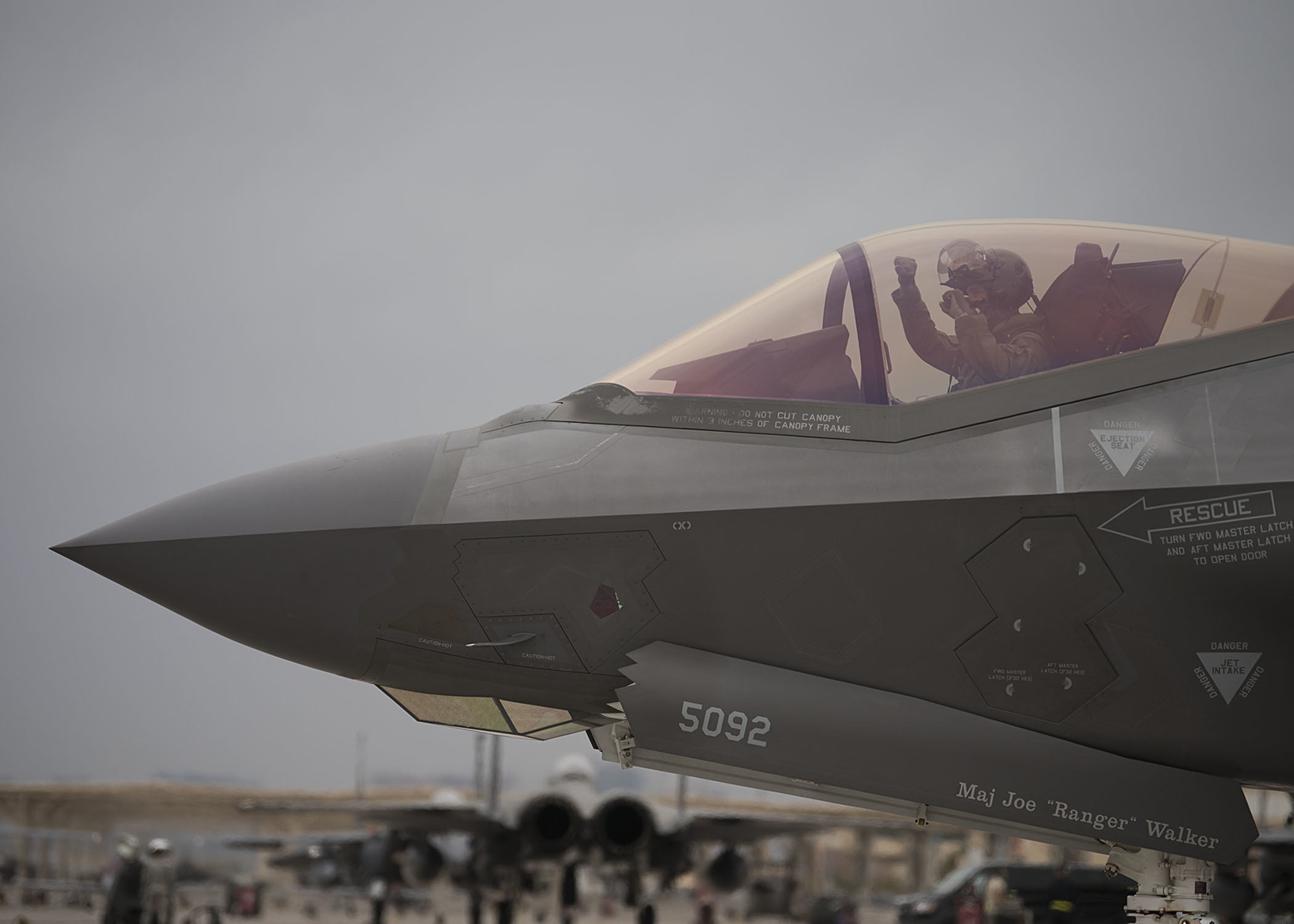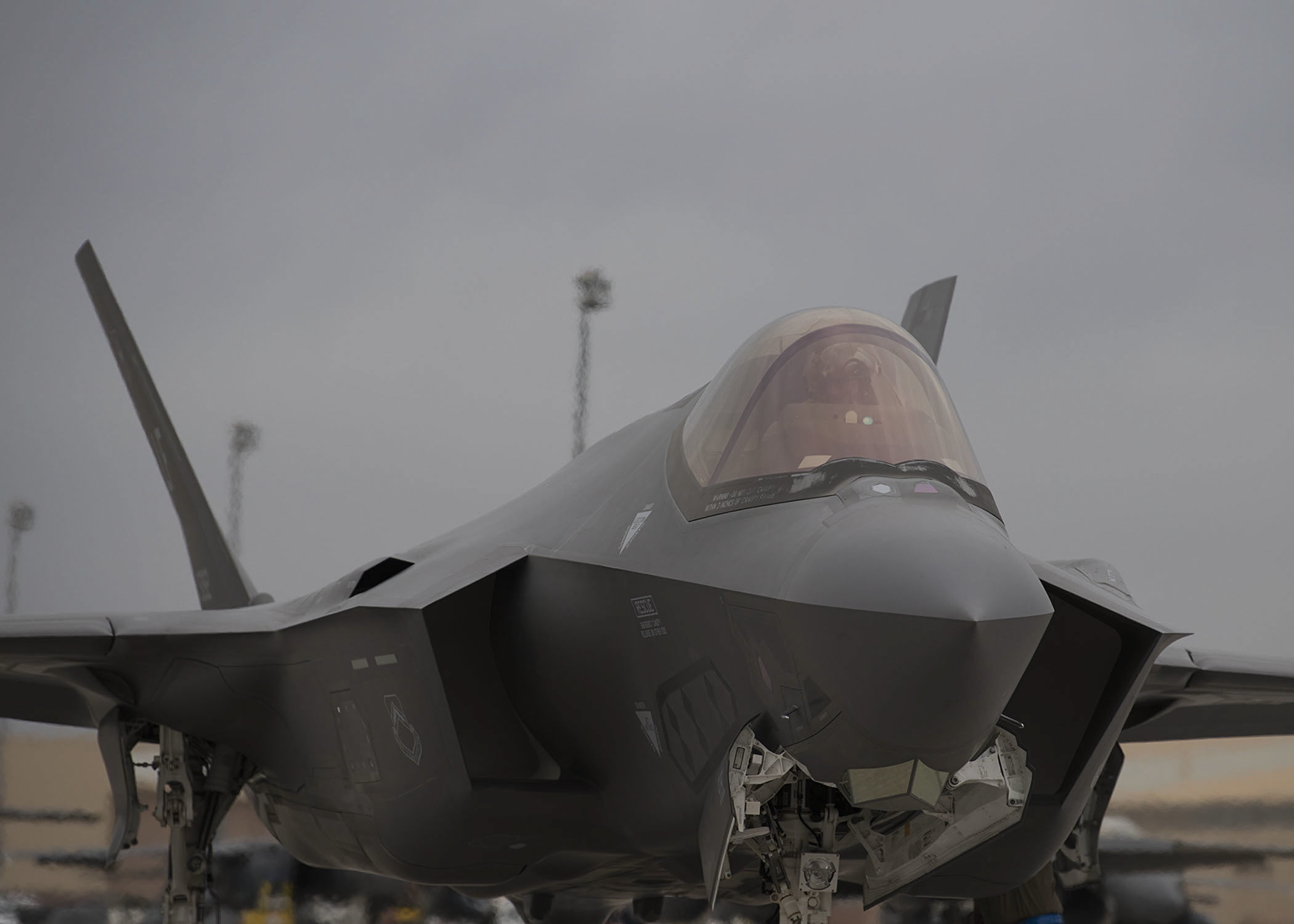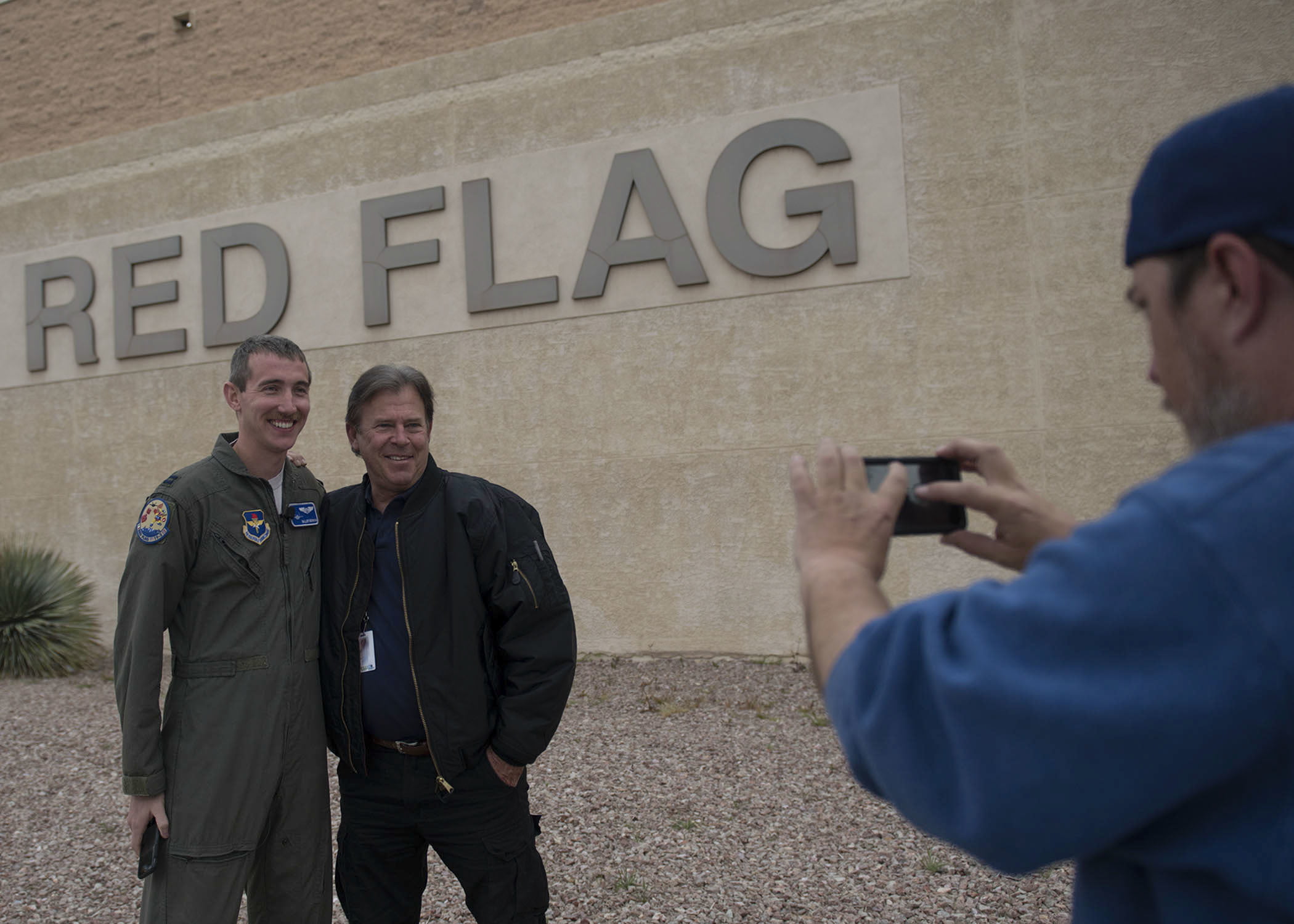The role of the US warfighting centers at Nelllis, Fallon and Yuma MCAS have become increasingly significant as the US and the allies shape a new appraoch to Warfighting — the kill web.
The recent RAND report on the US dealing with adversary forces continues their long tradition of taking what the US and the allies used to do and comparing them against a projected enemy force and seeing how that turns out.
But this completely ignores how the US and the allies are significantly reshaping their combat forces, in part under the transformation of airpower association with fifth generation aircraft,
Fortunately, Nellis persists in.believing that real world innovation deters more than studies.
And we thank them for that.
In two recent stories published by Nellis AFB, aspects of preparing for the next Red Flag have been highlighted.
The first story by Airman 1st Class Bryan Guthrie, 99th Air Base Wing Public Affairs was published March 20, 2019
The 726th Air Control Squadron (ACS) are providing comprehensive radar coverage on the Nevada Test and Training Range (NTTR) for all the pilots flying in Red Flag 19-2 this month.
A team of Airmen from multiple career fields has come together at a mobile simulated forward operation base (FOB) to watch over hundreds on nautical miles of the NTTR.
“We’re the glue that binds everything together,” said Lt. Col. Richard Barber, 726th ACS commander. “When the tactical plan comes together, we are the one to orchestrate all the parts. We integrate with other Command and Control (C2) units to bring order to chaos and speed up battle management decisions.”
This is the first time the 726th ACS has brought the “Talk” to Red Flag and implemented it from the NTTR. The “Talk” is where all communication from the radar is brought in and dispersed to the pilots overhead. The overall affect is that it creates more realistic exercise for the 726th ACS.
A TPS-75 long range radar system is used to survey over 240 nautical miles and is one of the main pieces of equipment that gives the 726th ACS eyes over the NTTR.
When the radar is being used, its goal is to locate all aircraft in the air space around the FOB. Once an aircraft is located, personnel communicate with pilots and use data collected to distinguish aircraft between “Blue” and “Red” forces.
The 726th ACS is participating as the C2 function for Red Flag alongside the 964th Airborne Air Control Squadron, 16th Air Combat Control Squadron and Marine Air Control Squadron 24 for Red Flag. They all come together to produce an accurate representation of what is going on in real time.
The second is about a newbie coming to Red Flag for the first time.
This newbie is an F-35 pilot and even though he is a newbie, as a new fifth generation pilot he has the advantage highlighted in a comment made to an RAAF F-22 pilot earlier this decade:
He cited a comment made to him by a USAF F-15 C pilot:
“I have more SA with only 20 hours on the F-22A than I ever had with over 1500 hours on the F-15C.”
And more to the point, now the USAF as it has expanded significantly its fifth generation force needs to practice from that point forward and not continue to be dominated by legacy thinking.
And it is by such transformation that the USAF and their sister forces are working to prevail in any future air combat with a peer adversary.
The second story was also by Airman 1st Class Bryan Guthrie, 99th Air Base Wing Public Affairs and was published March 22, 2019.
Capt. Kyle Benham, 62nd Fighter Squadron F-35A Lightning II fighter jet pilot, participated in his first Red Flag March 8-22 at Nellis Air Force Base, Nev.
Benham is participating in Red Flag 19-2 to increase his experience with coalition forces from across the globe and improve on his skills in an F-35A in a mass exercise that pushes even the best fighter pilots to their limits, especially for those at Red Flag for the first time.
“The goal for me in this exercise is to think beyond just my aircraft and get into the big picture of how I can help 60 plus aircraft in the mission,” said Benham.
Benham discussed further how Red Flag itself could be a monster.
“Nellis is the location everyone talks about,” said Benham. “There’s a lot of history and tactics that come out of here. As far as Red Flag itself, it’s one of the premiere exercises that a pilot can participate in. If there is any intimidating part of Red Flag, it’s that you’re going to jam 60 to 70 aircraft in a confined space. Thus, forcing everyone to work as a team to solve whatever tactical problem presented.”
Ten other nations will make up all the aircraft in the sky for Rad Flag 19-2.
“The hardest factor will be that coalition partners bring something different such as tactics or the way they communicate them. Making sure that we are all on the same page so we can execute the mission in a real-life scenario.”
As Benham progressed through Red Flag, he noticed minor improvements as the U.S. and its partners worked together.
“One of the areas I noticed an improvement in is the integration with other aircraft and platforms while airborne,” said Benham. “It is awesome to see the improvement in communication from day one to now, going into the second week, going from some miscommunication to being able to pass and receive information between aircraft for dynamic targeting in a short amount of time.”
Without a doubt, Red Flag has changed over the years, but some legacies have never changed.
“I feel blessed to have the opportunity, especially because my grandfather was a fighter pilot and the legacy he carried,” said Benham. “Being able to see everything he experienced in his time compared to now. It means a lot to me that the Air Force would take the time and money to put an exercise together, such as Red Flag, so we can have the experience we need to prepare us for real life conflicts.”
Red Flag is conducted three times at Nellis AFB and enhances combat readiness of air forces around the world. The next Red Flag is scheduled for summer 2019.
And published a decade ago, a response to a flawed RAND study then and Nellis is responding to the now.
I would encourage the Russian and Chinese military to take much more seriously what is going on at Nellis, Fallon and MAWTS-1 than what is being written by an organization like RAND.
That is if you wish to stay alive in combat.
Response to RANDLt. General (Retired) Deptula put it well in his introduction to a set of case studies in the use of airpower which was published by USNI in 2017 and made it clear that these case studies were first rate, but airpower was moving in a very different direction.
What Deptula had to say is the baseline from how Nellis is training the 21st century fifth generation enabled Air Force.
Unfortunately, the legacy appraoch seen in the case studies in the book is where the head of too many “strategists” is still stuck while the warriors move on.
July 21, 2016, marked the ninety-fifth anniversary of Brig. Gen. Billy Mitchell’s successful sinking of the battleship Ostfriesland. At that time the airplane’s utility was largely unproven, and this bold, dramatic demonstration of airpower’s potential was a significant event in military history.
The evolution of airpower from that day in 1921 to the present has been difficult, varied, stunning—and controversial.
Airpower’s capacity to achieve tactical, operational, and strategic goals has expanded at a tremendous rate. Airmen who fly and fight today have at their disposal capabilities their pre- decessors could not have imagined.
Modern airpower, its survivability greatly enhanced by platform speed and low observability, can strike anywhere around the globe—rapidly, in all weather, day or night, and with extreme precision. A single aircraft today equipped with weapons of near-zero-miss distance capability can achieve the same effects that in World War II took thousands of bombs on hundreds of aircraft.
Such technological advances have redefined the way in which military leaders can harness airpower.
Airmen have always embraced their ability to rise—literally—above the constraints of terrain and to transcend the restrictions of a horizontal perspective.
As airpower extended its reach into space and the technologies of air and space merged in application, a theory of the indivisibility of aerospace power materialized. By the end of the twentieth century, the resulting combination of air and space technologies gave aerospace systems great accuracy and ensured access.
This combination has yielded a concept of operations for achieving control over an enemy’s essential systems that is no longer defined simply by levels of destruction.
The concept rests on the realization that denying an adversary the ability to operate as it wishes is ultimately at least as important as destroying the forces that the adversary relies on to achieve its aims.
Air forces around the world seize on the advantages of operating in air and space, and now cyberspace, to project power.
By imposing very specific effects on an adversary through means employed from air and space, airpower can effectively exercise strategic control over the outcome of a conflict.
This outcome-driven or effects- based approach has expanded the options for the conduct of warfare beyond the attrition- and annihilation-based models that defined surface warfare for centuries.
Airpower can shape, deter, and dissuade so that nations can attain their most important goals while minimizing the need for combat operations.
When combat becomes necessary, aerospace capabilities can create a variety of strategic, operational, and tactical effects that yield disproportionate advantages relative to surface warfare without projecting the same degree of vulnerability.
Leading-edge computing and network capabilities have empowered the emergence of information as the dominant factor in warfare.
As a result, today we are in the midst of an “information in war revolution”—one in which the speed of information, advances in technology, and the design of organizations are merging to change the way we conduct warfare.
As we move further into the twenty-first century, new aerospace capabilities will create a paradigm shift in the role that aircraft play in warfare.
Fifth-generation aircraft and those that will succeed them will become sensor-shooter nodes in a distributed network.
When integrated with other system “nodes” in every domain—air, space, land, and sea—these assets will coalesce into a “combat cloud”: a self-forming, self-healing intelligence, surveillance, reconnaissance (ISR)-strike-maneuver- sustainment complex that has the potential to usher in a new era of warfare.
Instead of relying on traditional approaches that mass fighters, bombers, and supporting aircraft into strike packages to attack particular targets, a combat cloud will integrate complementary capabilities into a single, combined “weap- ons system” that can conduct disaggregated, distributed operations over an entire operational area.
Concurrently, the concept of employment for aircraft is evolving from a stove-piped, parochial service alignment to a loosely federated “joint and com- bined” construct today, on the way to a highly integrated enterprise collaboratively leveraged through the broad exchange of information.
Stated another way, military forces will increasingly attain desired effects through the interaction of multiple systems, each one sharing information and empowering the others to achieve a common purpose.
As a result, aircraft previously labeled as “fighters,” “bombers,” “reconnaissance,” “cargo,” and so on will play far broader roles than they ever did in the past.
Capturing this potential, however, requires military professionals both to think innovatively and to shed anachronistic beliefs that aircraft can only perform single functions and missions.
In the second cen- tury of airpower, we must untether airpower from the confining categories of “B- . . . ,” “A- . . . ,” “F- . . . ,” “MQ- . . . ,” or any other label.
Constrained thinking, restrictive categorization schemes, and anachronistic nomenclature undermine the innovation needed.
The evolution of airpower depends on the evolution of technology, and the human imagination and knowledge that enable the invention, development, and application of airpower instruments.
As the case studies in this book reveal, airmen from America, Britain, France, Israel, and elsewhere in the world worked tirelessly during the twentieth century to embrace innovation, creativity, and change.
Airpower Applied chronicles the results of their efforts, demonstrated in conflicts ranging from the Allies’ strategic bomber offensive in World War II to today’s campaigns against insurgents.
However, while airpower has matured to the point that it is now acknowledged as an indispensable element of modern warfare, current practitioners may have become too complacent regarding its potential to determine the outcomes of warfare.1
It is clearly the focus of Nellis, Fallon and MAWTS-1 on shedding complacency, shedding legacy thinking, and driving innovation provided by fifth generation aircraft to reshape combat operations and enable the kill web,
We can only hope that policy makers who do not understand this or policy analysts with their heads in the past embolden our enemies rather than supporting and reinforcing the innovation of our warriors,
Nothing less than or fate as a nation or of the free world is at stake.


